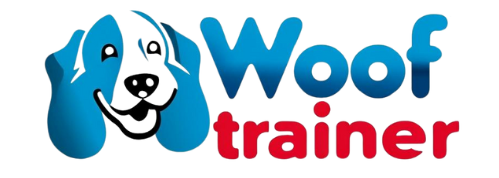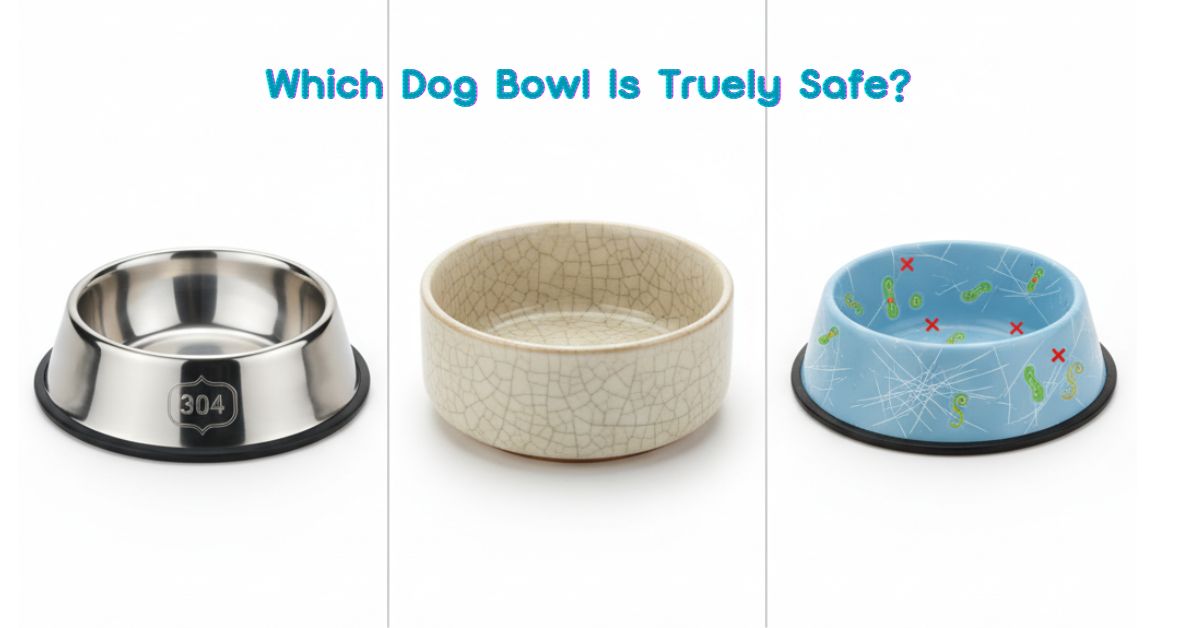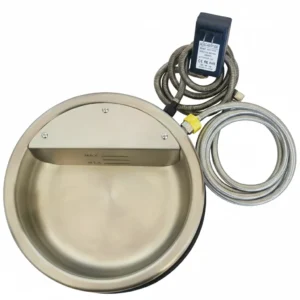Choosing a favorite stainless steel dog bowl for your beloved dog should be a joyful moment. But when you open Amazon and search for “stainless steel dog bowl,” you’re hit with analysis paralysis. You can’t make sense of the various terms: “18/8,” “304,” “316,” “food-grade.” Which type of dog bowl should you really choose? Which kind is safe? Which model won’t rust?
What should have been a simple task has left you confused, draining your time and energy.
I truly get your frustration. As a canine training and behavior consultant with over 12 years of experience, I’ve seen too many owners pay an unexpected price for choosing the wrong “bowl.” Your concerns are completely valid. If you buy an unsuitable dog bowl, it’s more than just a waste of money. Most importantly, if a low-quality bowl harms your dog, you’ll be left with a deep sense of guilt. A client of mine learned this the hard way when a cheap 18/8 stainless steel bowl caused their dog to have an allergic skin reaction.
My client—we’ll call him Alex—has a Bulldog named Max with particularly sensitive skin. To prevent flare-ups, Alex specifically paid a premium for a dog bowl that claimed to be “top-grade 18/8 stainless steel.” Initially, Alex was thrilled; its high-end look and “top-tier safety material” gave him confidence. But a few weeks later, he noticed tiny, almost imperceptible rust spots appearing on the bottom of the bowl. At first, he didn’t think much of it, assuming it was just stubborn residue he’d missed while washing. But then he saw that the skin around Max’s chin was becoming irritated again, and he realized it might be linked to his food or his bowl. He consulted his veterinarian, who mentioned that stainless steel bowls come in many different grades—like 18/8, 304, and 316—and that some sellers might cut corners by passing off inferior materials as high-quality. Since consumers typically don’t have the expertise to tell the difference, they can accidentally buy a shoddy stainless steel bowl and unintentionally harm their dogs. Alex instantly remembered the “stains” he’d seen. He went home and inspected the bowl closely, only to find that his high-end “stainless steel bowl” was, in fact, rusting!
The story of Alex and Max could happen to any one of our beloved pets. To prevent Max’s ordeal from happening to you, we need to take a closer look at “stainless steel.” This article is written for you today, in the hope of bringing health to your dog and peace of mind to you.
“Stainless Steel” Bowls All Look Alike, So How Do You Tell Them Apart?
When you walk into a pet store and see the shelves of gleaming dog bowls labeled “stainless steel,” they all seem identical.
In reality, reputable dog bowls will clearly state which grade of stainless steel they’re made from. The grades are different, and the difference is huge!
18/8 vs. 304 Stainless Steel: Are They the Same Thing?
“18/8.” This number is simply shorthand for the steel’s chemical makeup, meaning the alloy contains approximately 18% Chromium and 8% Nickel. Chromium is the key ingredient that forms a tough, invisible protective layer, giving stainless steel its excellent rust and corrosion resistance. Nickel enhances its durability, shine, and stability across various temperatures.
Now for the key question: What is the relationship between 18/8 and 304?
In the world of kitchenware and high-quality pet supplies, you can consider them to be synonyms.
“18/8” is the most common industry nickname for the “304 stainless steel” grade. So, when you see a bowl marked as 18/8, it’s almost certainly made of 304 stainless steel—the same kind used by high-end kitchen brands or premium outdoor companies like YETI.
However, is looking for an “18/8” or “304” label enough? Far from it.
90% of the Risk is Hidden Beneath the Shiny Surface
You can’t judge a dog bowl’s true quality on appearance and price alone. What really determines if a bowl is a “health guardian” or a “hidden killer” are the 90% of factors that lie beneath the surface:
- Material purity: Is your bowl made from pure, new “virgin steel,” or from low-quality recycled scrap steel? The latter can contain heavy metals like lead and cadmium, or other unknown impurities.
- Manufacturing process: Were the industrial lubricants used during the stamping and shaping process completely removed? A responsible manufacturer adds multiple cleaning steps to ensure this, whereas a cheap workshop might skip them.
- Surface treatment: Is the inner wall of the bowl finely polished to a truly smooth, non-porous “sanitary-grade” standard, or does it just look shiny while being covered in microscopic scratches and pits that can harbor bacteria?
This is why two bowls both labeled “304 Stainless Steel” can have price tags of $10 and $50. That price difference reflects these invisible but critical safety costs.
Just like the bowl Alex bought for Max, its material might have technically fallen into the 18/8 category, but he undoubtedly dealt with an unscrupulous seller, which ultimately resulted in rust and health problems for his beloved dog.
Of course, in general, price is a common indicator of a product’s quality, especially when you’re not an expert. However, I suggest that when you buy a dog bowl, a careful hands-on inspection is essential—it will at least increase your chances of getting a high-quality product.
Besides stainless steel bowls, you can also find plastic and ceramic ones on the market. Which is better?
Steel vs. Ceramic vs. Plastic
It has to be said, when you consider all performance aspects like safety and durability, the stainless steel dog bowl is the undisputed champion. When you don’t know which material to choose, picking stainless steel is a no-brainer; you most likely won’t go wrong.
A ceramic dog bowl might be heavier and smoother, making it suitable for small dogs indoors. Plastic dog bowls are cheap and lightweight, but they are the worst in terms of safety and durability.
| Material | Advantages | Disadvantages / Main Risks |
|---|---|---|
| Stainless Steel Bowl |
|
(No significant disadvantages) |
| Ceramic Bowl |
|
|
| Plastic Bowl |
|
|
After reviewing the comparison table above, you should have a much clearer idea of how to choose the right dog bowl.
A well-made bowl using genuine 304 (18/8) stainless steel is leagues ahead of ceramic and plastic bowls in safety, hygiene, and durability. This is also why veterinarians and professionals make high-quality stainless steel bowls their top choice.
Conclusion: Why Vets and Professionals Prefer High-Quality Stainless Steel
Through this showdown, the conclusion is obvious. While ceramic and plastic bowls have their conveniences in certain situations, if safety, hygiene, and durability are your top priorities, then a well-made bowl using genuine 304 (18/8) stainless steel is the only choice that gives veterinarians, trainers, and all professionals true peace of mind. It’s not just a container; it’s the first line of defense in protecting your dog’s health.
My Stainless Steel Bowl is Expensive, Does That Mean It’s Safe?
Generally speaking, yes. A high price often indicates high quality. But as consumers, we need to learn how to become more discerning. The following 5 shopping tips will definitely increase your chances of buying a great product.
Tip 1: Check the Stamp
A manufacturer who is confident in their product will proudly and clearly stamp the stainless steel grade, such as “304” or “18/8,” on the bottom or side of the bowl. Compared to products that only vaguely state “stainless steel” on a sticker, a permanent stamp is a much more reliable promise of quality.
Tip 2: Feel the Edge
Gently run your fingertip along the bowl’s inner and outer rim. A high-quality bowl will have finely polished edges that feel round and smooth, with absolutely no sharpness. If the edge feels rough or sharp, it’s not just a sign of poor craftsmanship; it could also scratch you or your dog during use and cleaning.
Tip 3: Weigh It
Hold the bowl in your hand to feel its heft. Quality stainless steel bowls are usually made from thicker steel and feel solid and substantial, not light and flimsy. For example, a well-designed, heavy-duty outdoor water bowl might weigh up to 1.5 kg (about 3.3 lbs) on its own to ensure excellent stability. A bowl that’s too thin is not only easy to dent but also easier to tip over.
Tip 4: Examine the Design
Look at the bottom of the bowl. Does it have a thick, non-slip rubber ring embedded around the base? This seemingly simple detail shows the designer’s consideration for real-world use, and it can effectively prevent your dog from treating the bowl like a toy and pushing it all over the floor.
Tip 5: Avoid the Traps
Please be wary of products with brightly colored coatings or intricate decorations on the inside of the bowl. While these coatings may look nice, they can peel off over time and be ingested by your dog. In some cases, they’re even used to cover up low-quality or flawed metal underneath. The safest choice is always the classic, uncoated stainless steel bowl.
Please be sure to remember the 5 tips above so you can use them the next time you go shopping. If you’re shopping online, please check the product against these 5 points as soon as it arrives. If you find that the product doesn’t match the description, contact the seller immediately to request a refund!
The 8 Most-Asked Questions About Stainless Steel Dog Bowls (FAQ)
Q. What exactly is “18/8 stainless steel”? What does the name mean?
A: “18/8” is a common name for a type of stainless steel, and it refers to its composition: approximately 18% chromium and 8% nickel. Chromium is the key to its rust resistance, while nickel boosts its durability and shine. In the world of kitchenware and premium pet products, “18/8 stainless steel” is generally the same as “304 stainless steel.”
Q. Is 18/8 stainless steel food-grade? Is it truly non-toxic and healthy for dogs?
A: Yes, the material itself, 18/8 (304) stainless steel, is a recognized food-grade material. It’s stable, non-toxic, and won’t leach harmful substances into food or water. However, it’s important to remember that “true safety” depends on both the material and the manufacturing process. A responsible manufacturer ensures the product is free of industrial chemical residue and that its surface is finely polished to be smooth and non-porous.
Q. I also see 304 and 316 stainless steel. What are the differences between them and 18/8?
A: 18/8 vs. 304: As mentioned, these two terms are basically used interchangeably for high-quality stainless steel in the pet bowl industry.
304 vs. 316: “316 stainless steel” is an upgraded version of 304 that includes “molybdenum.” This element gives it superior corrosion resistance, especially against chlorides (like salt water), which is why it’s often called “marine-grade” or “medical-grade” stainless steel.
Q. Why did my “stainless steel” bowl still get rusty? Is this normal?
A: That is absolutely not normal. A genuine, high-quality 304 stainless steel bowl will not rust under normal use. If your bowl rusted, it’s usually for one of these reasons:
- Substandard Material: This is the most common cause. The product is likely “stainless iron,” which has too little chromium to form an effective protective layer against rust.
- Impure Materials: The bowl was made using low-quality recycled steel, and the impurities within it have compromised the steel’s stability.
- Improper Use: The bowl was exposed to harsh, corrosive chemicals (like chlorine bleach) for a long time, or its protective surface was scratched by hard objects like steel wool.
Q. Can I use a magnet to test if a stainless steel dog bowl is genuine? Is 18/8 stainless steel magnetic?
A: This is a common myth, but a magnet test is not reliable. Typically, 304 (18/8) stainless steel is not magnetic. However, the manufacturing process (like being stretched or stamped into a bowl shape) can alter its metallic structure, causing it to become slightly magnetic. So, a bowl that doesn’t attract a magnet isn’t guaranteed to be good, and one that is slightly magnetic isn’t necessarily fake. We highly recommend using the five-step inspection method mentioned earlier (check the stamp, feel the edge, weigh it, etc.) to judge the quality.
Q. Compared to ceramic bowls, are stainless steel bowls a better choice?
A: Yes, if you’re looking from the core perspectives of hygiene, safety, and durability. Stainless steel bowls are non-porous, shatterproof, and easy to thoroughly sanitize. While ceramic bowls are attractive and heavy, their glaze can crack and harbor bacteria, cheap colored glazes pose a risk of heavy metal leaching, and they can break and injure your pet. For professionals and owners who put safety first, high-quality stainless steel is the superior option.
Q. How do I properly clean and maintain a stainless steel dog bowl to ensure its hygiene and longevity?
A: After each use, simply wash it with mild dish soap and hot water, then rinse well and dry. If you get hard water spots or stubborn stains, you can scrub it with a paste of baking soda and water or soak it in a white vinegar solution. Never use abrasive tools like steel wool or harsh scouring powders, as they will scratch the stainless steel surface. Also, avoid using chlorine-based bleaches or disinfectants, as they will corrode the bowl’s protective anti-rust layer.
Q. Can 304 stainless steel dog bowls be cleaned in the dishwasher?
A: Yes, a high-quality, uncoated 304 stainless steel bowl is completely dishwasher-safe. Its high heat and corrosion resistance are more than enough to handle a dishwasher cycle. However, if your bowl has a removable non-slip rubber or silicone ring on the bottom, be sure to take that ring off first!
A real 304 stainless steel dog bowl with automatic water and heated functions→SHOP NOW!



